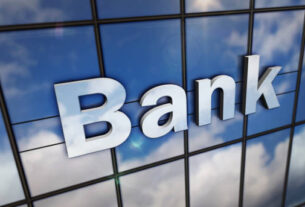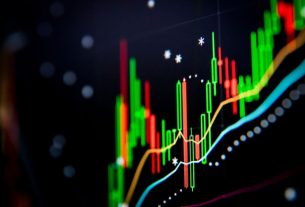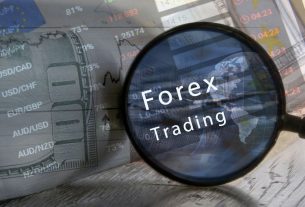How is the demand changing?
Changes in demand represent changes in the consumer’s desire to buy a particular product or service, regardless of price fluctuations. This change may be due to changes in income levels, consumer preferences, or other prices for related products.
Understand changes in demand:
Demand is an economic principle that relates to the consumer’s desire to buy. There are many factors that affect market demand for certain goods and services. The main determinants are:
Income: the amount a consumer has to spend.
Consumer preference: what type of product is always popular?
Buyer Expectations: Do consumers expect prices to rise in the future, likely due to limited supply?
Price: How much does a product or service cost?
Associated Product Prices: Are there any alternative products or services of similar value that are much cheaper?
Despite constant prices, changing demands for goods and services lead to changes in demand. When the economy flourishes and incomes rise, consumers can buy more of everything. Prices will remain the same, at least in the short term, but sales volumes will increase.
On the contrary, it can be expected that demand will decline at all costs during a recession. When economic growth slows, jobs shrink, incomes shrink, people get nervous, discretionary spending goes down, and only the bare essentials are bought.
Record changes in demand
The increase or decrease in total market demand is shown on the demand curve. This is a graphical representation of the relationship between the price of a product or service and the quantity ordered over a period of time. Prices are typically shown on the left vertical y-axis and demand on the horizontal x-axis.
The supply and demand curves form an X on the graph, with supply on top and demand on bottom. Draw a straight line from the intersection of these two curves on the x and y axes to get a price and quantity level based on current supply and demand.
Changes in demand and demand:
It is important not to confuse changes in demand with demand. Demand represents the total amount of goods or services requested at any given time, depending on the price charged in the market. Changes in demand, on the other hand, focus on all determinants of demand, with the exception of price changes.
Examples of changing demand:
When an item becomes fashionable, consumers may be pushing you to buy because of clever advertising. For example, Apple Inc.’s iPhone sales remain almost constant because, despite various price increases over the years, they are the number one smartphone on the market and are stuck in the Apple ecosystem. Apple’s iPhone has also become a status symbol in different parts of the world, Nokia Corp. shows that demand is not as elastic as cell phones were in the early 2000s.
Technological advances and fashion trends aren’t the only factors that are changing demand. For example, during the mad cow disease scare, consumers started buying chicken instead of beef, but the price of meat did not change.
Chicken can also be beneficial when the prices of other competing poultry products are rising significantly. In such a scenario, despite the same cost in supermarkets, there is a demand for chicken rockets. Alternatively, the demand for the gasoline-intensive Ceteris Paribus SUV can fall if the gasoline price is perceived as rising.
In view of the rising prices of new cars, many consumers prefer used cars because, despite the low interest rates, they cannot buy expensive cars locally for cash or monthly payments.
Locally assembled Honda cars are much more expensive than Japanese cars, likely due to their low location.
According to data from Arif Habib Ltd, the Honda Civic IVTEC will sell for 3,614 million rupees compared to 2.4 million rupees in January 2018, and the Oriel and Turbo models will be at 3,864 million rupees and 4 rupees. Labeled with 564 m .549 m. And Rs 2,899 m.
Honda City 1.3, 1.5 Aspire Manual and 1.5 Aspire Prosmatec sell for Rs 2,599 million, Rs 3,019 million, and Rs 3,174 million, respectively, compared to Rs 1,599 million, Rs 1,789 million, and Rs 1,929 million, respectively. BR-VIVTEC was priced at 2,329 million rupees as of January 2018 but is now selling at 3,374 million rupees.
Toyota Corolla 1.6 and Altis Grande 1.8 cost 3,249 million rupees and 3,869 million rupees, compared to 2,199 million rupees and 2,589 million rupees. Toyota Fortuner is now available for Rs 9,269 million compared to Rs 5,550 million.
Suzuki Wagon R VXR and VXL are now available for 1,530 million rupees and 1,760 million rupees, compared to 1,064 million rupees and 1,124 million rupees prior to 2018.
The prices for the Cultus VXR, VXL and AGS models are 1,270 million rupees, 1,391 million rupees in early 2018, compared to current prices of 1,655 million rupees, 1,830 million rupees, and 1,975 million rupees in early 2018, and 1,470 million rupees.
Suzuki Alto 660cc VX, VXR, VXL models were launched for Rs 999,000, Rs 1,101 million, Rs 1,295 million compared to current prices of Rs 1,113 million, Rs 1,335 million and Rs 1,521 million.
The price of locally assembled cars was much higher until June 2021. Cars and SUV prices fell from Rs 40,000 to Rs 400,000 on July 1, 2021, after the government decided to cut fees and taxes.
As prices skyrocket, private cars and spot bonuses in locally assembled showrooms are driving car purchase costs even higher. Car dealers charge up to 1 million rupees for new models upon request.
According to random market research, the price of used cars (previously locally assembled from 1,000 cc to 1,800 cc) varies from model to model, from 50,000-60,000 rupees to 400,000-500,000 rupees over the past three years. Outside and inside the perspective model and resale value.
Local mechanics attribute the rise in car prices to fragile exchange rates, high tariffs and prices for raw materials such as steel and plastics.
However, the price of used cars has not increased in the past three years due to the high prices of locally assembled cars. Used cars are becoming a more affordable option for more and more consumers because used car prices do not rise with new car prices. New car prices have increased more than 40% since 2018, while most used car prices have increased. 15 to 20 pieces, depending on the manufacturer, model and year of manufacture.
The growing demand for cars and SUVs has also paved the way for new stores to sell / buy used car platforms online. One of them is Vava Cars, and as with new cars, national manager Mujahid Khan has seen used car prices rise in recent years and fluctuated in 2021 due to the government’s attempt to control new car prices.
He said the government’s efforts to control the price of new cars earlier this year brought benefits in the very short term and within a few months of “own” money collected for the early delivery of new cars. He said prices had risen again. . Mujahid said that VavaCars aims to solve the problem of buying and selling used cars for its customers by offering the best value in its class in a wide price range with no hassle and giving you a choice of brands.
According to HM Shahzad, president of the All Pakistan Car Dealers Association, the value of used cars (field-assembled) has not fallen in the last three years and the prices of used cars that fall under various programs will be 5 in 2021. Date due to the devaluation of the rupees one month to one dollar.
Also, Check
- Milestone’: First batch of 40 buses for Green Line project reaches Karachi

Oliver is a professional blogger and a seasoned business and finance writer. With a passion for simplifying complex financial topics, he provides valuable insights to a diverse online audience. With four years of experience, Oliver has polished his skills as a finance blogger.



